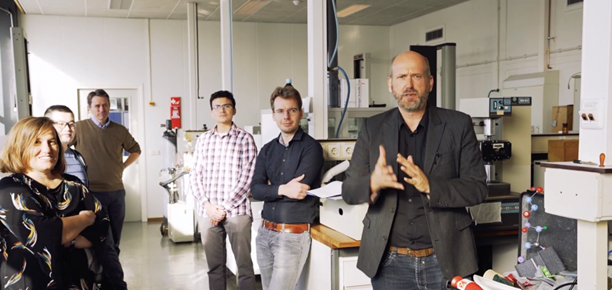Biomembrane to clear up oil spills wins KIJK People’s Choice Award
Biomembrane SAVER has won the People’s Choice Award for KIJK’s best Tech-idea. This membrane, made from natural components, is able to separate oil from water and is fully recyclable. SAVER was developed by polymer scientists from the research group led by Prof. Katja Loos and researchers from NHL Stenden University of Applied Sciences.
With no less than 3,600 votes, SAVER left 19 other ideas far behind. In November, KIJK will be paying extensive attention to SAVER.
Battling pollution with malic acid
We have all seen the images of huge oil spills in our oceans. Removing this oil pollution poses a big challenge. Researchers from the UG and NHL Stenden have been working together in a hybrid research group to find a solution. Katja Loos, Chongnan Ye, Rik Brouwer, Renato Lemos Cosse, Vincent Voet, and Rudy Folkersma developed a strong biomembrane made from the organic compound malic acid. The membrane is a so-called super-amphiphile. This means that the material has an affinity for oil as well as water, just like soap. Because of this, it can separate these two components. When the pores of the membrane become clogged, it can be recycled completely, after which the purified building blocks can be re-used to create a new membrane.
More information

| Last modified: | 11 October 2021 1.21 p.m. |
More news
-
21 May 2024
Results of 2024 University elections
The votes have been counted and the results of the University elections are in!
-
13 May 2024
Trapping molecules
In his laboratory, physicist Steven Hoekstra is building an experimental set-up made of two parts: one that produces barium fluoride molecules, and a second part that traps the molecules and brings them to an almost complete standstill so they can...
